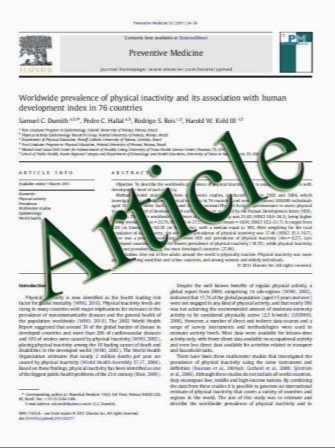Does increased sunlight exposure work as a strategy to improve vitamin D status in the elderly: a cluster randomised controlled trial
- نوع فایل : کتاب
- زبان : انگلیسی
- مؤلف : P. N. Sambrook & I. D. Cameron & J. S. Chen & R. G. Cumming & S. Durvasula & M. Herrmann & C. Kok & S. R. Lord & M. Macara & L. M. March & R. S. Maso
- چاپ و سال / کشور: 2011
Description
Summary Sunlight exposure by improving vitamin D status could be a simple public health strategy in reducing falls among frail elder people. In a randomised controlled trial, adherence to sunlight exposure was low (median adherence, 26%) and no effect of increased UV exposure on falls risk was observed (incidence rate ratio (IRR) 1.06, P=0.73). Introduction This study aimed to determine whether increased sunlight exposure was effective to improve vitamin D status and reduce falls in the elderly. Methods In a cluster randomised controlled trial (NCT00322166 at ClinicalTrials.gov), 602 residents aged 70 or more (mean age, 86.4 years; 71%female) were recruited from 51 aged care facilities in Northern Sydney, Australia. Participants were randomised by facility to receive either increased sunlight exposure (additional 30.40 min/day in the early morning) with (UV+) or without (UV) calcium supplementation (600 mg/day) or neither (control) for a year. The co-primary endpoints were change in serum 25 hydroxy vitamin D (25OHD) and falls incidence after 12 months. Results Adherence to sunlight exposure was low (median adherence, 26%; IQR, 7%.45%). Serum 25OHD levels were low at baseline (median, 32.9 nmol/L) and increased only slightly depending on the number of sunlight sessions attended over 12 months (P=0.04). During the study, 327 falls occurred in 111 (54%) subjects in the control group, 326 falls in 111 (58%) subjects in the UV only group and 335 falls in 108 (52%) subjects in the UV+ group. By intentionto- treat analysis, there was no significant effect of increased UVexposure on falls risk (IRR, 1.06; 95% CI, 0.76.1.48; P= 0.73). However, in 66 participants who attended .130 sessions per year (adherence, .50% of 260 sessions.five per week), falls were significantly reduced (IRR, 0.52; 95% CI, 0.31–0.88; P=0.01) compared with the control group. Conclusions Increased sunlight exposure did not reduce vitamin D deficiency or falls risk in frail older people. This public health strategy was not effective most likely due to poor adherence to the intervention.
Osteoporos Int DOI 10.1007/s00198-011-1590-5 Received: 25 October 2010 / Accepted: 3 February 2011


